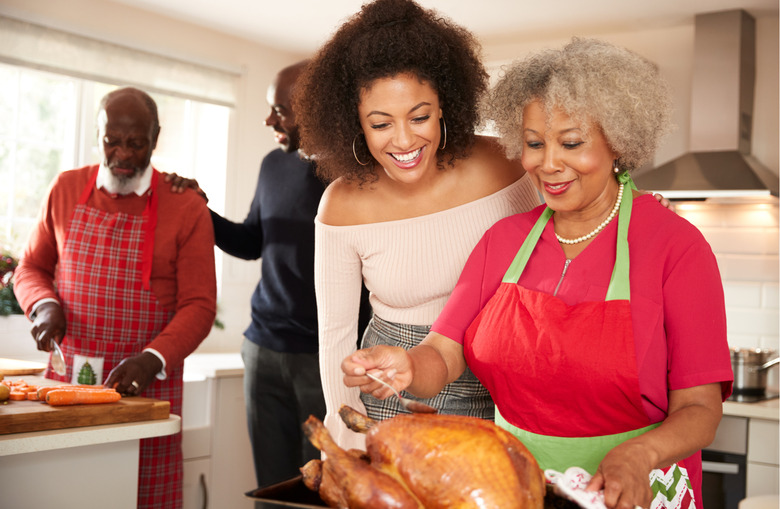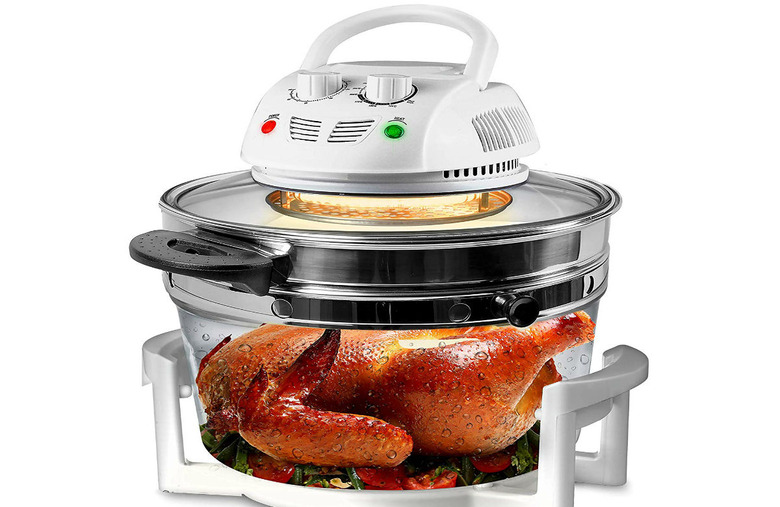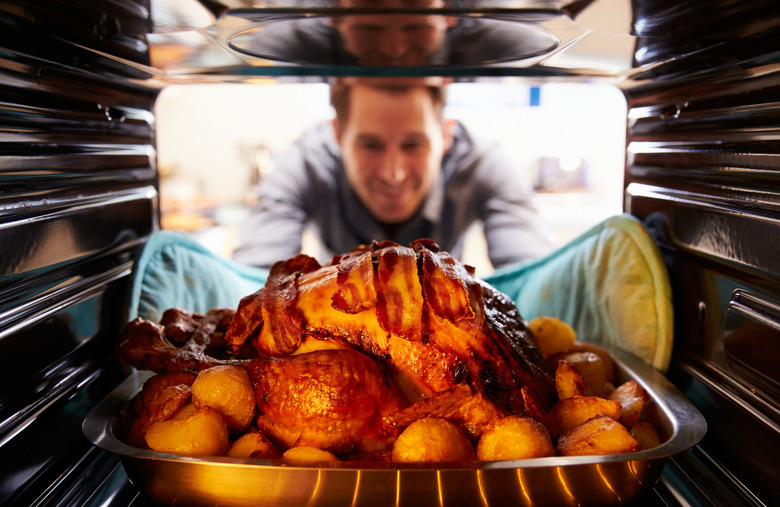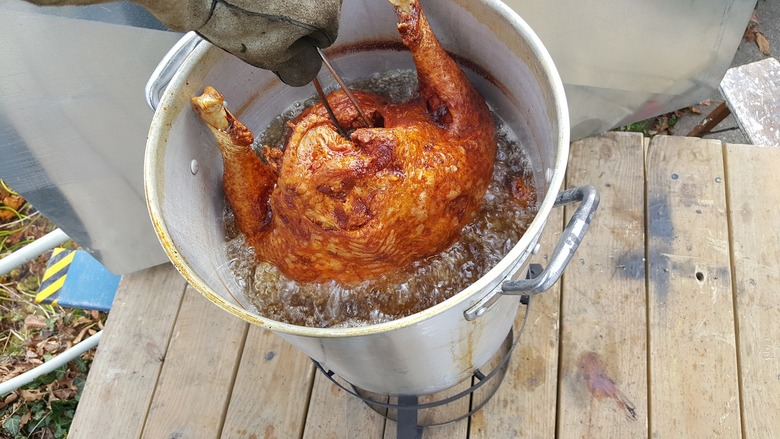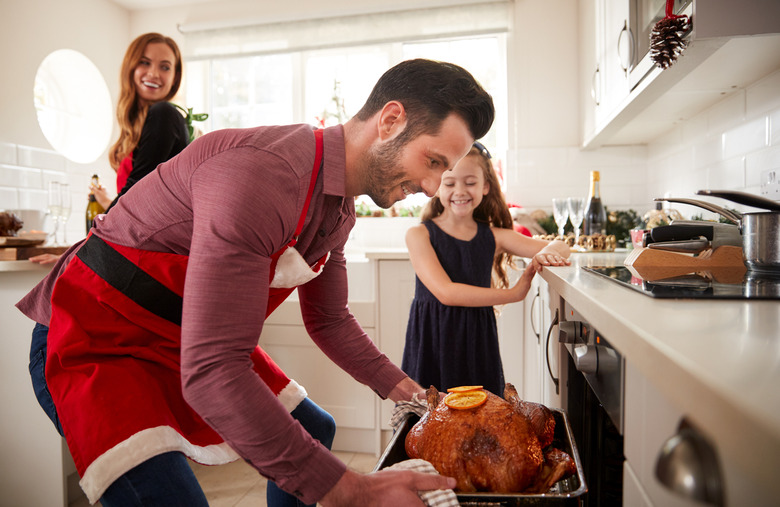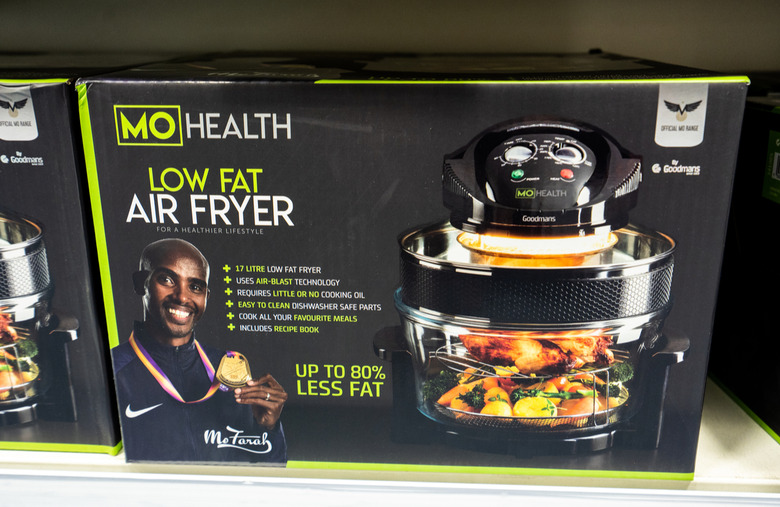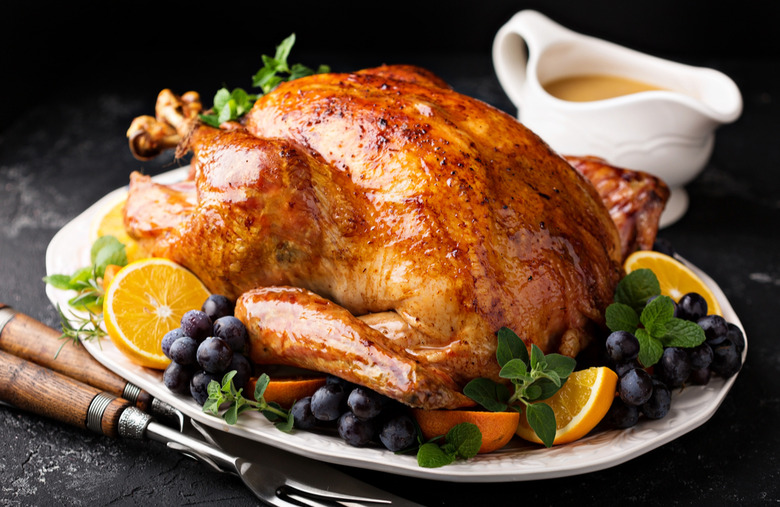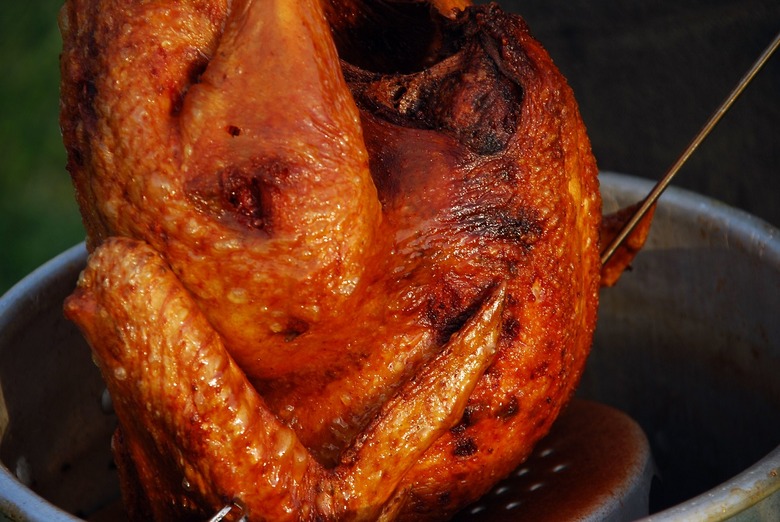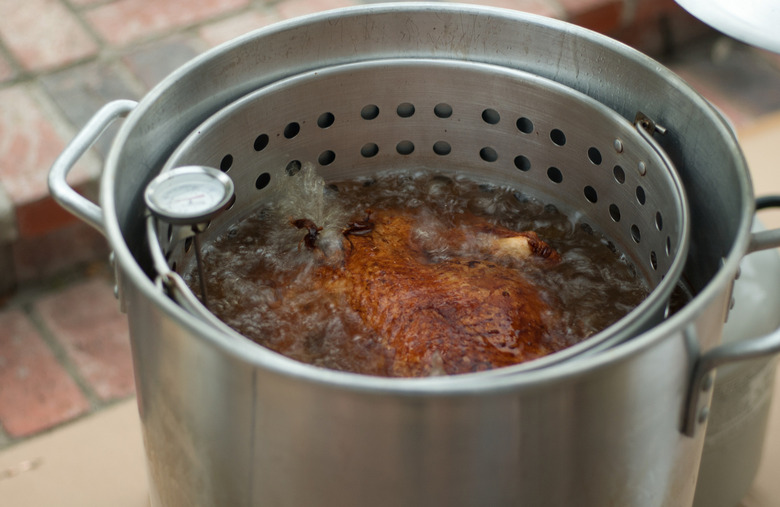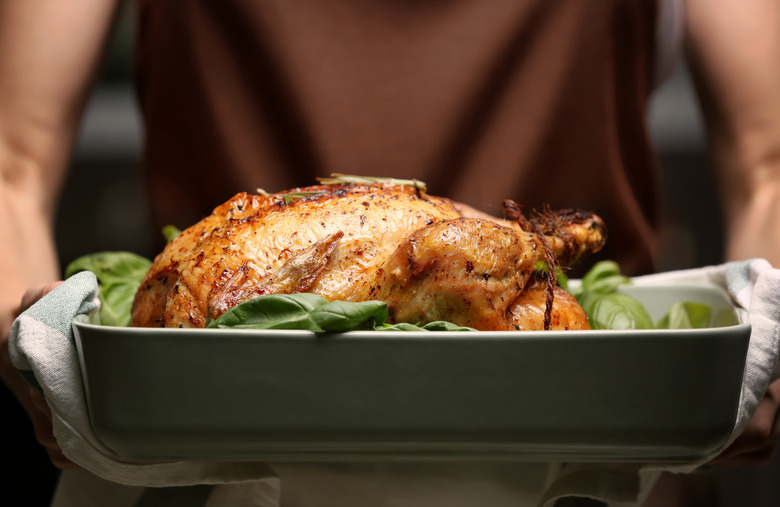Should You Air-Fry, Oven-Roast Or Deep-Fry Your Turkey?
Turkeys are an important part of the holiday season. And if you know how to make the perfect turkey, it may become a year-round favorite too. A lot can go into preparing this big bird, but you should know that the oven isn't your only option; deep-frying a turkey is a beloved tradition for many, and the trendy air-fryer is catching up as a viable option too. We broke down each option so you can determine which method is best for you and your guests.
Air-frying
A more recent innovation, the air-fryer uses a mechanical fan or infrared light to circulate hot air around food at a high speed, operating as what is essentially a convection oven inside an enclosed bucket. In order to air-fry a turkey, you'll need an air-fryer with a capacity of about 12 quarts or more. Make sure to pat the turkey dry after brining and then refrigerate it for a few hours — the drier the turkey, the quicker it'll cook. It's also not recommended that you stuff the bird beforehand, and basting isn't encouraged either — just slather it in oil or butter in addition to any herbs and spices you want to use.
Oven-roasting
The most traditional method for cooking a turkey is to roast it in a conventional oven, which is pretty easy to learn once you know what to do. The typical rule of thumb is to roast for 30 minutes per pound and ensure that the turkey has a minimum internal temperature of 165 degrees Fahrenheit. It's recommended to brine the bird first for maximum flavor and juiciness, although it isn't necessary and some turkeys can be bought pre-brined. Roasting in the oven also allows for making the gravy with the drippings, and believe it or not, you actually shouldn't baste your turkey.
Deep-frying
Deep-fried turkey is a typical Southern Thanksgiving dish, and it requires quite a bit of preparation. Using a fryer specifically meant for turkeys, the process needs to be done outside for safety reasons, and you'll need to make sure everyone involved is wearing gloves, as well as long sleeves and pants. After making sure the turkey is completely thawed and patted dry inside and out, the bird is lowered into a turkey fryer filled with hot oil that's attached to a burner and propane tank. A lifter is used to lower and raise the turkey from the large pot of the fryer, and a thermometer gauges the temperature during the process. Peanut oil, or another oil with a high smoke point such as canola or safflower oil, is typically used. While you can season the turkey by rubbing it in salt and pepper or injecting marinades, this method also does not allow for stuffing nor does it result in any drippings or broth for gravy.
Best option for beginners
Roasting a turkey in the oven is the most tried and true method, and probably best for beginners. If this is your first time in charge of the bird, learn how to make your turkey right. Most turkey recipes tell you to set your oven at 325 degrees and roast your turkey for about 30 minutes per pound. You will know your turkey is done when the internal temperature reads 165 degrees in the innermost part of the thigh as well as the thickest part of the breast. Use an instant-read meat thermometer rather than going off the color of the bird's skin or one of those pop-up timers. And chances are you already have plenty of experience using your oven, the familiarity with which will be helpful when roasting your turkey.
Healthiest option
The air-fryer uses almost no oil when cooking a turkey. All you need is just enough to brush or spray onto your bird. Not only do you get a nice and crispy skin, but you get it done in a manner that has minimal fat and oil involved.
Best-looking option
If you're looking to post a cool video on social media, deep-fried turkeys tend to get a lot of love. For a great snapshot of the picture-perfect stuffed turkey, a roasted turkey has a classic look that's sure to impress everyone at the table.
Crispiest option
Air-fryers are known for being a great method for crispy foods, and not just because they manage to do it without much oil. If you prefer your turkey on the crispier side, consider using an air-fryer.
Juiciest option
All the effort that goes into deep-frying a turkey does result in a rewarding amount of flavor and juiciness. While the exterior isn't always as crispy as you may want it, the white meat of a deep-fried turkey doesn't dry out as fast as it does in the oven.
Fastest option
Once in the deep-fryer, a turkey needs only four minutes per pound, which means you can cook a 15-pound turkey in about an hour, and smaller turkeys even quicker. A turkey in the oven or air-fryer, on the other hand, will take 30 minutes per pound, if not longer. Using a turkey fryer also frees up space in your oven and on your countertop, giving you ample room to get started on all your side dishes.
Safest option
Cooking and kitchen safety is a definite concern, so you want to make sure you're well-prepared for whichever option you choose. Deep-frying a turkey is a notoriously dangerous endeavor. Not only is there a chance of spilling or getting splashed with hot oil, but just the fact that you have hot oil over an open flame makes the method especially dangerous. Deep-fryers have been known to cause fires and explosions when the utmost care isn't taken, and a lot of safety gear — such as gloves, an apron and clothes that cover your skin — is required. A conventional oven is pretty safe, although there is the risk of burning yourself if you're not careful when taking your roast out or putting it in. A bulky air-fryer can pose a hazard if not placed in the right spot, and it can get pretty hot to the touch as well. An oven or air-fryer is probably your best option safety-wise, depending on how crowded your kitchen is, whether or not you have children or pets running around and other factors. Now that you know your options when it comes to cooking your turkey, here are the answers to more of your Thanksgiving questions.
More from The Daily Meal:
Tips, Strategies and Secrets for Easy Thanksgiving Shopping
22 Things You Wouldn't Think to Make With Your Thanksgiving Leftovers
A Step-by-Step Guide to Cooking the Perfect Ham
